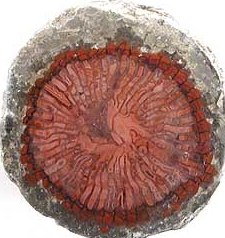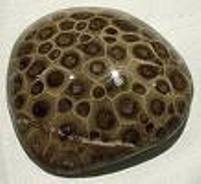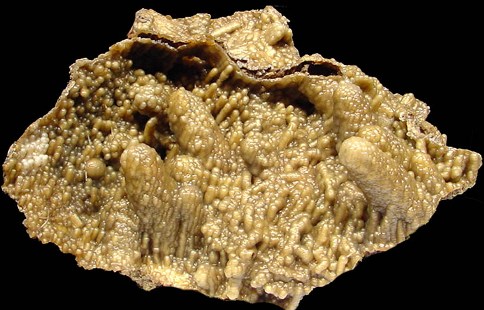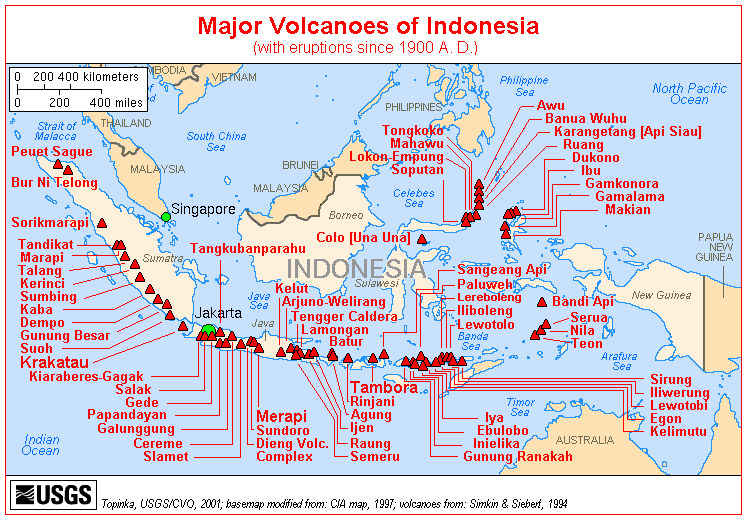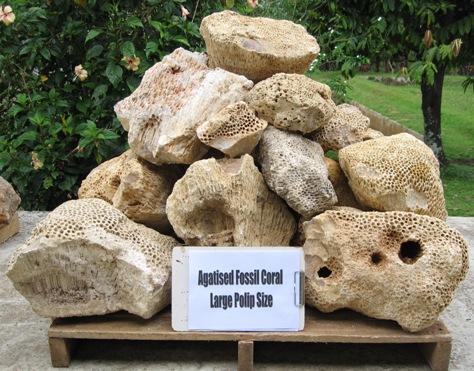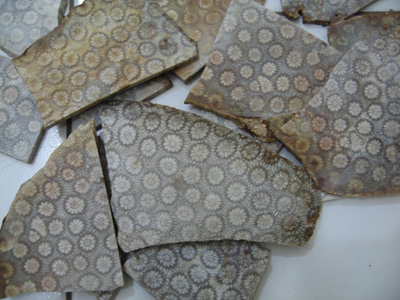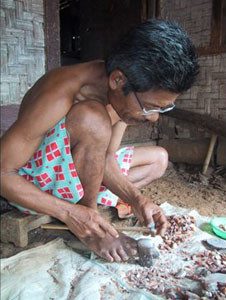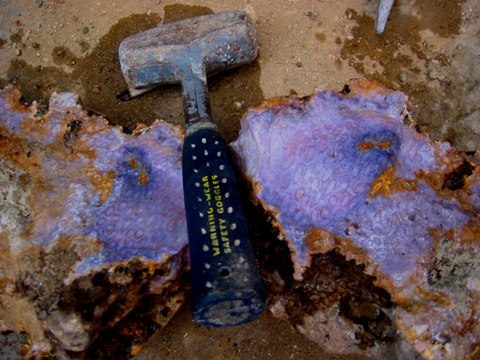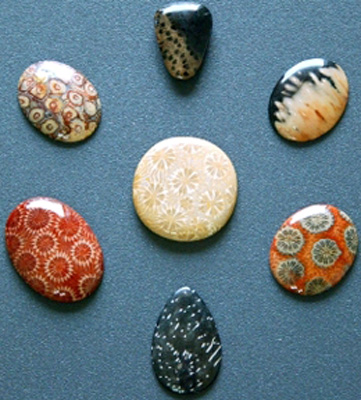|
Indonesian
Fossil Coral
|
||||||||||
|
FOSSIL CORAL, from Construction Material, Health Supplements, and now with discovery of uniquely preserved Indonesian varieties, the ornate use in Jewelry Joel Ivey 2008 INTRODUCTION Corals have been growing in the oceans around the world for almost 500 million years. Decorative coraline limestone and marble are popular building materials and have been used for centuries.
FORMATION
INDONESIAN FOSSIL CORAL
PROCESSES “Permineralization” is the process of filling pore space in and around the remnant hard coral skeleton with minerals deposited from solutions trapped or migrating thru the sedimentary pile as it is compressed into rock. This dual process preservation can occur with different accessory mineral concentrations and result in maintaining the contrast between the original soft tissues and the skeletal remains of the corals as different minerals impart different colors to the stone. The geochemical and geological conditions under which these processes take place are typically slightly acidic, low temperature and low pressure. The resultant deposition of replacement product is a micro or crypto crystalline quartz commonly termed “agate”. In Indonesia, entire coral heads (FIGURE 5) are often completely preserved and appear just as they did 20 million years ago although their density is much changed by replacement and infill with silica, iron, manganese and other minerals. There are fern corals, brain corals, hex corals, honeycomb corals and many more.
Specimen coral heads are found in many stages of preservation. Some are mere casts with thin replacement of the outer skin and a pumaceous, leached or partial replacement of the inner core. Other coral heads are completely preserved by the dual process and can make beautiful polished slab specimens (FIGURE 6). The silica ranges from light weight amorphous opaline to dense cryptocrystalline chalcedony. Re-crystalization is often found on fractures resulting in fine glittering coatings of quartz druze. Rarely, entire specimens are coated in fine crystals. The fossilized coral heads come in all sizes and can weigh from 100grams to 100 kilograms.
I found my first specimen while conducting a regional geological mapping program in South Sumatra in 1988. The smooth dark green, water worn cobble weighed about 2kg. It was solidly agatized and the honeycomb coral pattern was well defined. Sadly, the driver later took it to a machine shop and ground the center out to make an ashtray. Such is Indonesia… FOSSIL CORAL JEWELRY In 2001, I returned to the area and found the local villagers had begun a brisk business of digging the coral and smashing it up with hammers then fashioning the chips (FIGURE 7) into ornate cabochons and beads. I helped them find export markets, build some rock saws and from the workbenches of friends in the USA and Thailand, brought in some popular shapes to cut. This caught on and there is now a flourishing local lapidary industry in Indonesia (FIGURE 8) and their mainstay is agatized fossil coral.
We continued to survey the region and soon we had identified other deposits along the Barison Mountain Range. These were assorted characters and degrees of preservation. A great many coral species are preserved in three Sumatran Provinces and there is an occurrence in West Java and another in East Java as well. The assortment of accessory minerals introduced with the silica, vary greatly in color, from white to red and yellow, purple and pink (FIGURE 9). In several areas, we found proximal agatized palms and other fossilized woods which may have been preserved by a single volcanic event.
GLOBAL RECOGNITION Over the last 10 years, the unique ornate character of Indonesian agatized fossil coral has become recognized by rock hounds, fossil collectors, jewelers and lapidary enthusiasts around the World. If you GOOGLE just about any combination of words related to fossil coral or jewelry & coral, you will be directed to a myriad of websites with rough or polished Indonesian Agatized Fossil Coral materials (FIGURES 10 & 11) . Indonesian Fossil Coral products are found at Rock & Mineral and Gem & Jewelry Shows around the world.
METAPHYSICAL & MYSTICAL SIGNIFICANCE OF AGATIZED FOSSIL CORAL Agate is a common term for a naturally occurring variety of chalcedony or microcrystalline quartz. Typical colors are earthy tans, browns, grays, yellows, oranges, reds, pinks and purples. Physically, agate is thought to promote health of the teeth and gums and help heal disorders of the pancreas and improve circulation. It was a traditional healer of eye, skin and stomach ailments and was said to enhance longevity. SUMMARY AND CONCLUSIONS The physical toughness, visual softness, multitude of colors and graphic character exhibited by the agate which has replaced and preserved corals of Indonesia, provide a vast range of associated correlatives with the agates of the Metaphysical world. The fact that forces of nature have created these stones in the image of once living creatures, assures that, although all have similar physical properties, every piece will appear unique unto its viewer and no two pieces will be exactly alike. All these features add to the appeal of Indonesian Agatized Fossil Coral and its ever increasing popularity around the world today by curators, collectors, jeweler, hobbyists and rock hounds alike.
|
||||||||||
